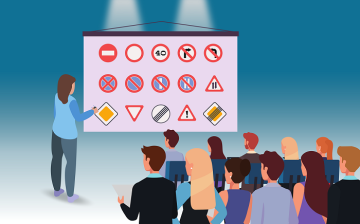If you’re planning on driving in Indiana, you’ll need to pass a written test in order to get your driver’s license. The written test is based on the state’s driver’s manual, and it covers topics such as road rules, traffic laws, and signage. Here’s what you need to know in order to pass the Indiana written test.
1. Study the Indiana driver’s manual.
This is the most important step in preparing for the written test. The driver’s manual will provide you with all the information you need to know in order to pass the test. Make sure to read through it carefully and take note of any key points.
2. Take a practice test.
Once you’ve studied the driver’s manual, you should take a practice test in order to gauge your knowledge. You can find practice tests online or in the back of the driver’s manual. Taking a practice test will help you identify any areas where you need to brush up on your knowledge.
3. Arrive early on the day of the test.
You may also read: 7 Significant Tips to Escape a Tornado When You’re Driving?
On the day of the test, you’ll need to arrive early and present a valid form of identification. Once you’re here, the test proctor will go over the test format with you and answer any questions you might have.
4. Relax and take your time.
The written test is not a timed test, so there’s no need to rush through it. Relax, take your time, and focus on providing the best answers you can.
5. Double check your answers.
When you’re finished with the test, be sure to go back and double check your answers. Once you’re sure you’ve answered all the questions to the best of your ability, you can submit the test and wait for your results.
You may also read: Parent vs Professionally Taught Driver’s Ed: Which one to Follow ?
passing the Indiana written test is comparatively easy if you follow the right steps. Just make sure to study the driver’s manual, take a practice test, and relax on the day of the actual test. If you do all of this, you should have no problem passing the test and getting your driver’s license.
Who Needs to Take the Indiana Driver’s Written Exam?
If you’re applying for an Indiana driver’s license for the first time, you’ll need to take the written exam. The written exam is based on the state’s driver’s manual, and it covers topics such as road rules, traffic laws, and signage. Here’s what you need to know about who needs to take the Indiana written test.
1. New drivers.
If you’re applying for an Indiana driver’s license for the first time, you’ll need to take the written exam. The written exam is based on the state’s driver’s manual, and it covers topics such as road rules, traffic laws, and signage.
You may also read: How to Drive Safely in Sun Glare?
2. Out-of-state drivers.
If you’re moving to Indiana from another state, you may be required to take the written exam. The best way to find out is to contact the Indiana Bureau of Motor Vehicles.
3. Drivers with a suspended license.
If your Indiana driver’s license has been suspended, you may be required to take the written exam in order to have your license reinstated. The best way to find out is to contact the Indiana Bureau of Motor Vehicles.
4. Drivers with an expired license.
If your Indiana driver’s license has expired, you may be required to take the written exam in order to have your license reinstated. The best way to find out is to contact the Indiana Bureau of Motor Vehicles.
You may also read: Why Should We Never Jump the Red Light in Indiana?
How Many Questions Are on the Exam?
The Indiana written exam consists of 30 questions. The questions are multiple-choice and are based on the information provided in the state’s driver’s manual. You’ll need to answer at least 24 questions correctly in order to pass the exam.
What Type of Questions Are on the Exam?
The Indiana written exam covers a range of topics, including road rules, traffic laws, and signage. The questions are multiple-choice, and they’re designed to test your knowledge of the state’s driver’s manual.










